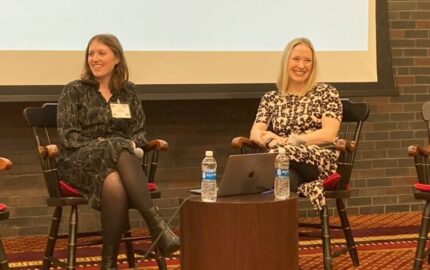Last year also brought the publication of A Drifting Life, an 855-page memoir by 75-year-old Yoshihiro Tatsumi, published by Drawn & Quarterly. Tatsumi is recognized by fans as the grandfather of alternative manga, a style identified with social realism and visual experimentation. It’s worth taking a look at both projects, because Tatsumi’s life and memoir have arguably played a role in making innovative storytelling projects like Manga Memoirs possible.
A Drifting Life
 Eleven years in the making, A Drifting Life is several things at once: a graphic narrative portrait of the manga artist as a young man after World War II, a treatise on the storytelling possibilities of experimental manga, and a testimonial to the very concrete relationship between form and content in comics.
Eleven years in the making, A Drifting Life is several things at once: a graphic narrative portrait of the manga artist as a young man after World War II, a treatise on the storytelling possibilities of experimental manga, and a testimonial to the very concrete relationship between form and content in comics.A Drifting Life offers insight into the development of manga as an industry and a form of multimedia storytelling. Hiroshi, Yoshihiro Tatsumi's stand-in protagonist, starts creating and publishing manga in seventh grade, inspired by the "postcard manga" contests hosted by the comics magazines that he and his jealous, chronically-ill brother passionately read and analyze. Coming from a poor family, Hiroshi uses one and two-panel humorous manga submissions as a means to make ends meet.
Hiroshi would soon find the postcard and two-panel format too constricting, and would begin creating longer stories with serious plots and experimental visuals inspired by world literature (Dostoyevsky and Shakespeare) and Japanese and American film (Kurosawa and Hitchcock). Managing to combine the personal with the theoretical, Tatsumi’s memoir offers an account of the historical development of manga as a medium caught between the demands of the market and the drive to experiment with narrative approaches.
Tatsumi's graphic storytelling about serious subjects predates that of his American counterparts by decades (see my prior Storyboard series for a history of true stories in American graphic novels). If, as The New York Times assures, A Drifting Life "has a rolling, rumbling grandeur," it is because Tatsumi has done more than take on serious subjects—he aspires to change the way stories can be told. During one of his internal monologues about the creative process, Hiroshi aspires to synchronize "panel and time." By using the medium of comics to tell his life story as an author and the story of the Japanese comics medium itself, Tatsummi achieves not only the seamless blending of life and art, but also an impressive example of graphic storytelling, where the images themselves serve as examples of the cultural history they tell.
A Drifting Life emphasizes the basic role that letter writing and the postal system, including the waiting times in between sending and receiving letters and packages, played in defining the creative process and narrative techniques of Japanese comics. Yoshihiro Tatsumi's lesson is clear: the ways that comics are produced determine the medium's storytelling powers. Without knowing it, in his struggle to develop a kind of "manga that wasn't manga" by aspiring to recreate cinematic storytelling out of still images in panels on printed pages, Yoshihiro Tatsumi was anticipating the revolution of digital storytelling.
In A Drifting Life Hiroshi spends a long time writing, reading and waiting for letters delivered through the post. "Postcard manga" combined a medium of communication with an art form—the postcard was the art work itself. Tatsumi's book is also testimony to the influence of non-Japanese cultural products, and in this sense his comics are also an expression of multiculturalism.
Manga Memoirs

If Yoshihiro Tatsumi's memoir emphasizes the key role that reader-submitted material played in the development of Japanese comics, Manga Memoirs takes this formula, based on the direct interaction between readers and publishers, into the realm of Web 2.0.
Manga Memoirs is the 21st century expression of manga storytelling. It stimulates manga creation to narrate experiences of multiculturalism, a hybrid approach that is mirrored in the website, which combines print and digital media.
The anthology is the result of a continuous open call for submissions from regular people of Japanese/Canadian descent who register to the site and submit their work for consideration. The best stories are commented on by readers and participants of the community and chosen by a committee. The site combines online digital tools with the publication of a printed book anthology featuring the winning submissions. It is based on user-generated content but reciprocates by stimulating comics creation, reflection on multicultural identities and the active participation in a social networking site composed by people with shared backgrounds and interests.
Manga Memoirs’ creative director, Jessica Leigh Clark-Bojin, describes the narratives they ended up featuring:
The vastly personal nature of the stories submitted, and the restrictive 8-page count gave birth to some lovely and meaningful “slice of life” moments. Layer in the innocent feel of manga artwork and the result is a charming and approachable form of story consumption. I believe that people who may not be drawn to short stories or other text-based forms of autobiography still find themselves drawn to Manga Memoirs because of the artwork, and end up moved by the intimacy of the author’s offering, in spite of themselves.
Even though the first anthology has already been published in print, they keep receiving submissions, and allow the publication of comments, reviews, blogs and new related work. Says Clark-Bojin:
At this time the first Manga Memoirs anthology has gone through a limited print run in both English and Japanese, and we are in early talks with partners to launch the campaign for the second anthology. The response to the quality of the artwork, storytelling and the process in general has been so positive, I would be surprised if this first volume was the last.
The digital comics platform/reader allows the user, through the "page peel" function, to learn about the creative/production process behind each story, as well as extra information that completes the narrative, such as scripts, drafts, reference images, information about characters and creators, etc.
Talking about facilitating the digital manga project, Manga Memoirs editor Morgan Jeske says
The great thing about Manga Memoirs, to me, was that it strived to showcase both cultures, using a medium that is in its infancy here in North America. When I say infancy, I don’t mean it to sound as if I’m saying it’s stunted or underdeveloped, but that in comparison to manga in Japan, it’s very, very young.
Despite the sometimes uneven quality of the source stories in the final print anthology, the project offers insight into the promising future of true comics storytelling and publishing by combining print and digital tools and “opening up” the publishing platform to regular people. While Tatsumi’s memoir is largely limited to the physical identity of a bound book, Manga Memoirs turns his ideas into a social enterprise that can unfold everywhere for all participants.


